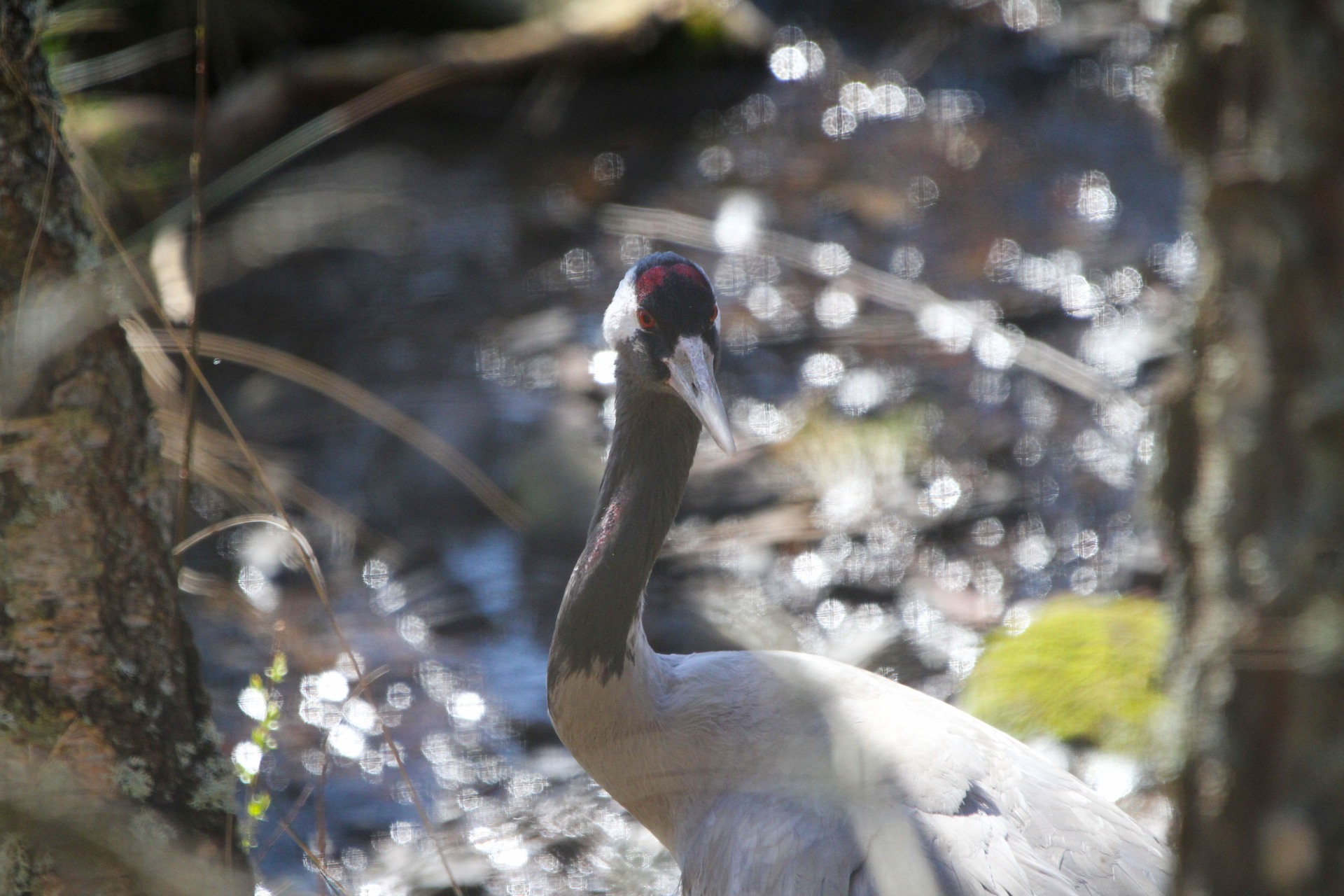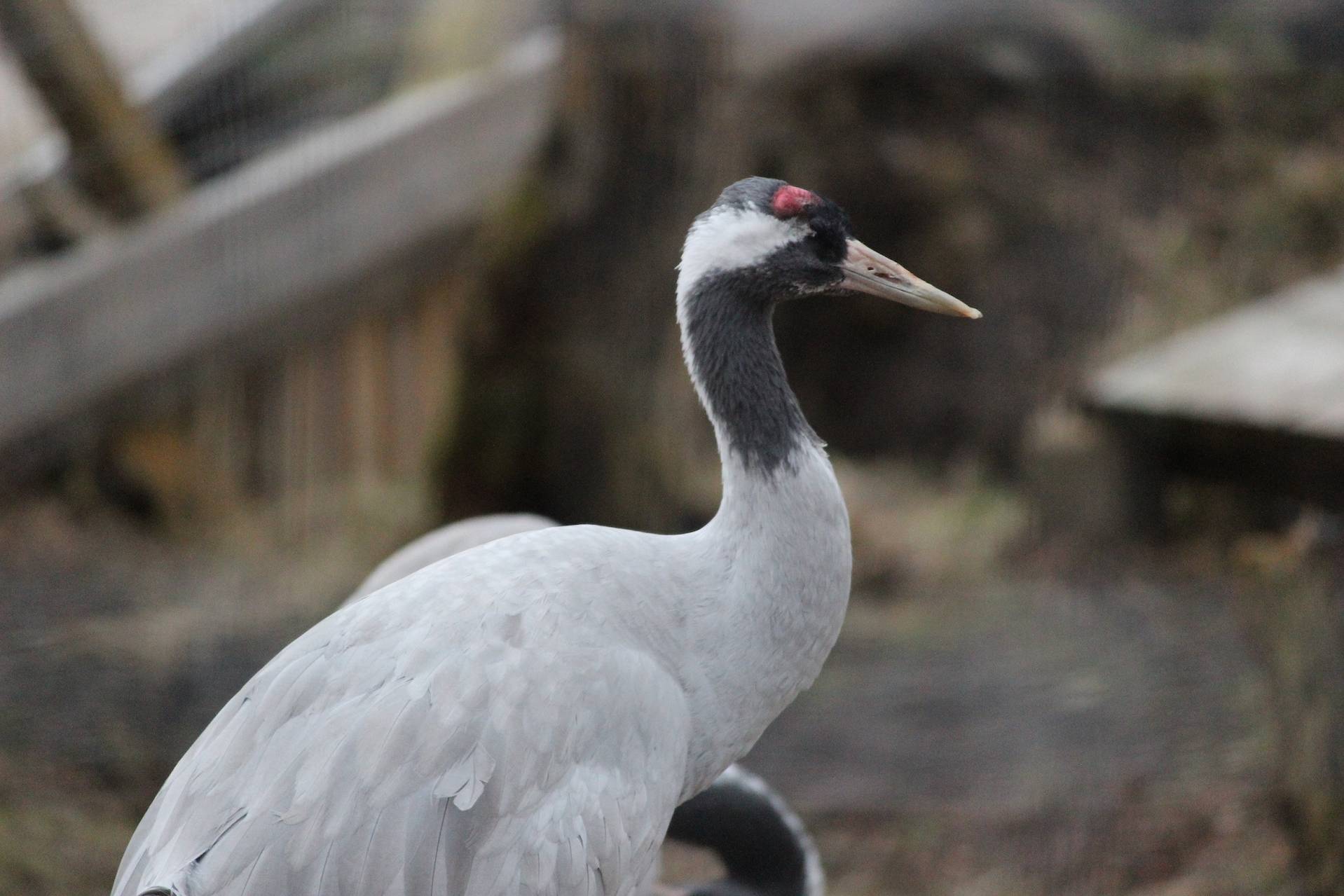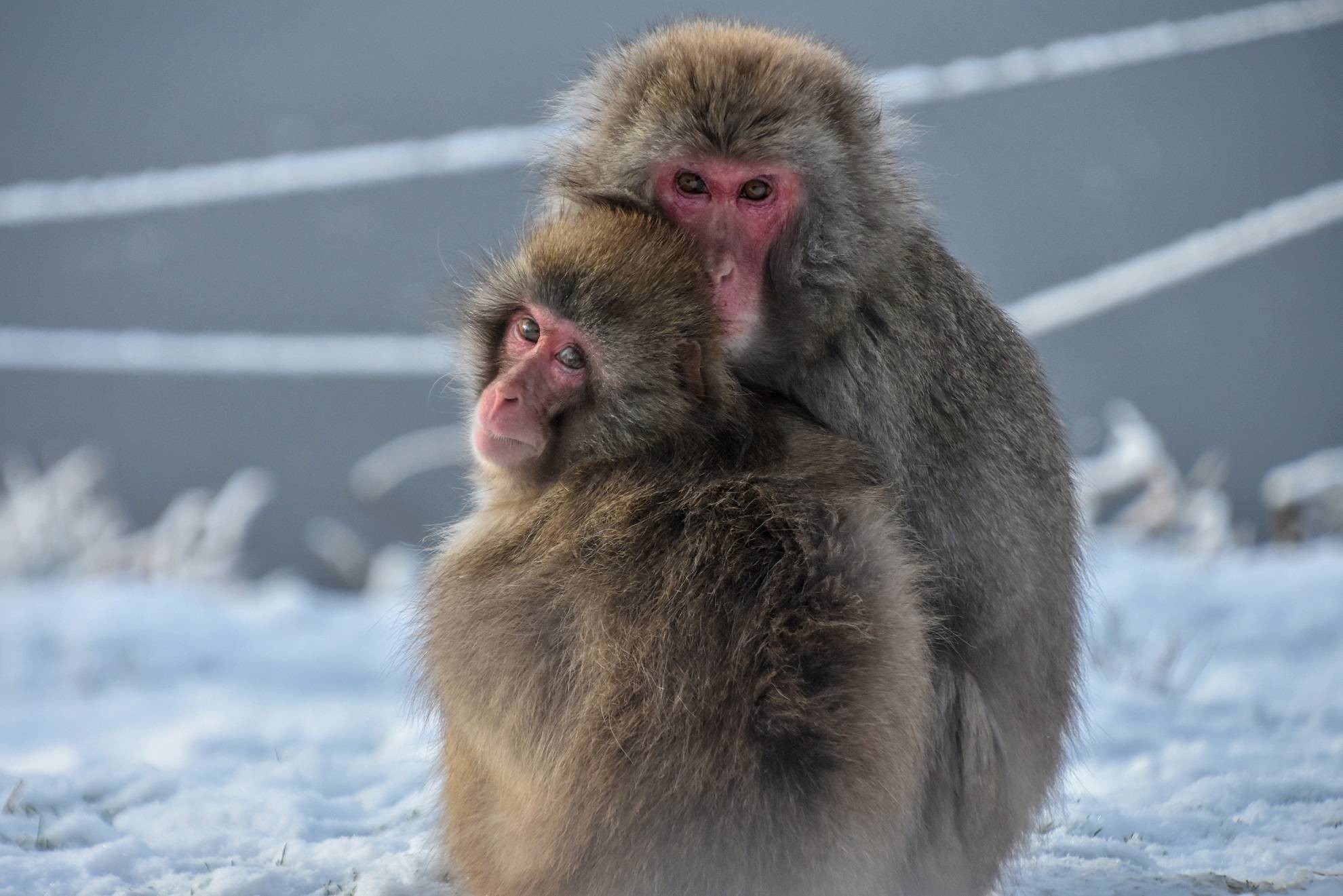Eurasian crane
Grus grus

We are currently home to two Eurasian (or common) cranes. A male, Hugh, and a female, Leela.
Population
Increasing
Diet
Insectivore
Habitat
Rivers and wetlands
Fact file
They are a large bird which can grow to more than a metre in height, with a wingspan of around two metres
All ages and sexes engage in ‘dancing’, which is made up of a variety of bows, bobs, and leaps. These are most commonly used in courtship
The common crane is no longer found in many parts of their former range due to habitat loss. With the protection and restoration of suitable wetland habitats, populations have started to return to former breeding grounds

How we're helping
Like all the animals in our care our cranes are amazing ambassadors for their relatives in the wild and help hundreds of thousands of people connect with nature every year. They encourage visitors to learn about the threats facing wildlife and the action they can take to help create a world where nature is protected, valued and loved.
As a wildlife conservation charity, we care for the animals here at the zoo and work to protect species at risk around the world. From providing expertise in genetics and veterinary health, to protecting wild places with local conservation partners, and even restoring threatened species to the wild, we are active where we are needed most.
Find out more about RZSS conservation
